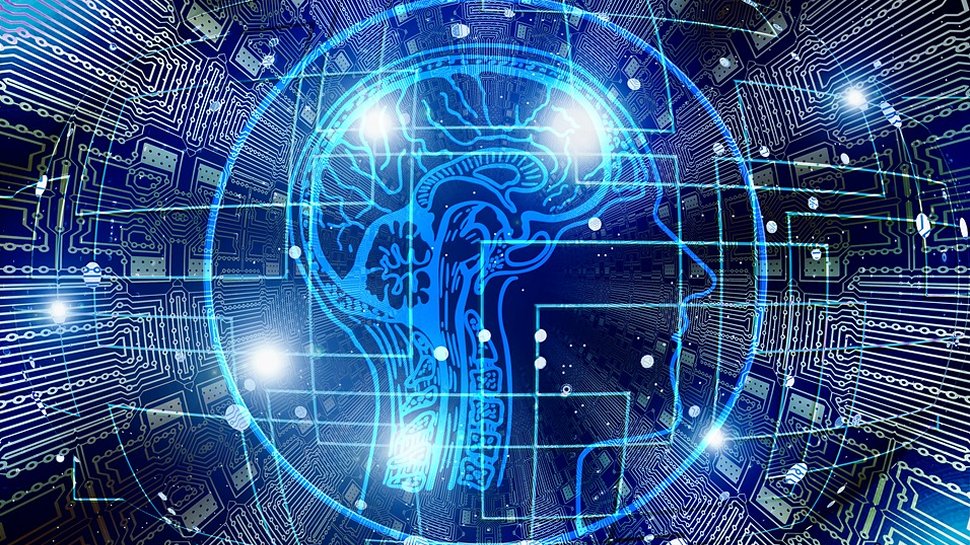"Revolutionizing Autonomous Driving: The Power of Language Models and Vision Tech"
Imagine a world where your car not only drives itself but also understands your every command, seamlessly navigating through bustling streets while interpreting the nuances of its surroundings. Welcome to the future of autonomous driving, where cutting-edge language models and advanced vision technology converge to create an unparalleled driving experience. As we stand on the brink of this automotive revolution, many are left wondering: How can these technologies work together to enhance safety and efficiency? What challenges lie ahead in implementing such sophisticated systems? In this blog post, we will delve into the transformative power of language models that guide navigation with precision and vision tech that acts as the vigilant eyes for autonomous vehicles. Together, they promise not just innovation but a safer journey for all road users. Whether you're a tech enthusiast eager to understand how these advancements could reshape our roads or simply curious about what lies ahead in transportation technology, you’re in the right place! Join us as we explore groundbreaking trends and tackle pressing challenges within this exhilarating domain—your roadmap to understanding autonomous driving starts here! Introduction to Autonomous Driving The DiMA framework represents a significant advancement in autonomous driving technology, merging vision-based planning with large language models (LLMs) for enhanced motion planning. This integration leads to notable reductions in trajectory errors and collision rates, particularly during rare or long-tail scenarios where traditional methods may falter. By employing Multi-modal Language Models (MLLMs), the system enriches scene representations through query-transformer modules, emphasizing the critical role of camera views for ego vehicles. Furthermore, leveraging LLMs enhances generalizability and robustness within dynamic environments. Key Components of DiMA DiMA's architecture includes innovative elements such as Q-formers and scene encoders that improve reasoning about vehicle dynamics while providing structured map representations essential for accurate trajectory prediction. The two-stage training process facilitates learning latent scene representations effectively, which is crucial for generating informative annotations relevant to autonomous navigation tasks. Performance evaluations on datasets like nuScenes demonstrate DiMA’s capability in visual question-answering tasks, showcasing its predictive accuracy under various driving conditions. This research highlights not only current advancements but also sets the stage for future innovations in autonomous systems by integrating sophisticated algorithms that enhance decision-making processes and safety measures on the road.# The Role of Language Models in Navigation Language models play a pivotal role in enhancing navigation systems for autonomous vehicles. The DiMA framework exemplifies this integration by combining vision-based planners with large language models (LLMs) to improve motion planning safety. By leveraging LLMs, the system achieves significant reductions in trajectory errors and collision rates, particularly during rare or complex driving scenarios. This is crucial as it allows vehicles to generalize better across various environments. Enhancing Scene Understanding The incorporation of Multi-modal Language Models (MLLM) alongside vision-based planners enables enriched scene representations through query-transformer modules. These advancements facilitate improved reasoning about vehicle dynamics and enhance structured map representations for accurate trajectory predictions. Furthermore, training strategies like the two-stage process for latent scene representation learning contribute significantly to the overall performance of autonomous navigation systems. By utilizing camera views effectively, ego vehicles can interpret their surroundings more accurately, leading to safer decision-making processes on the road. Additionally, innovations such as Q-formers and scene encoders are essential for refining how these systems understand context and predict future movements based on real-time data inputs from their environment.# Vision Technology: The Eyes of Autonomous Vehicles Vision technology is pivotal in the realm of autonomous vehicles, serving as their primary sensory input. The DiMA framework exemplifies this by integrating a vision-based planner with large language models (LLMs) to enhance motion planning accuracy and safety. This combination significantly reduces trajectory errors and collision rates, particularly in rare scenarios where traditional methods may falter. By employing Multi-modal Language Models (MLLMs), DiMA enriches scene representations through query-transformer modules that interpret complex environments effectively. Key Innovations in Vision Systems The integration of advanced components like Q-formers and scene encoders allows for improved reasoning regarding vehic

Imagine a world where your car not only drives itself but also understands your every command, seamlessly navigating through bustling streets while interpreting the nuances of its surroundings. Welcome to the future of autonomous driving, where cutting-edge language models and advanced vision technology converge to create an unparalleled driving experience. As we stand on the brink of this automotive revolution, many are left wondering: How can these technologies work together to enhance safety and efficiency? What challenges lie ahead in implementing such sophisticated systems? In this blog post, we will delve into the transformative power of language models that guide navigation with precision and vision tech that acts as the vigilant eyes for autonomous vehicles. Together, they promise not just innovation but a safer journey for all road users. Whether you're a tech enthusiast eager to understand how these advancements could reshape our roads or simply curious about what lies ahead in transportation technology, you’re in the right place! Join us as we explore groundbreaking trends and tackle pressing challenges within this exhilarating domain—your roadmap to understanding autonomous driving starts here!
Introduction to Autonomous Driving
The DiMA framework represents a significant advancement in autonomous driving technology, merging vision-based planning with large language models (LLMs) for enhanced motion planning. This integration leads to notable reductions in trajectory errors and collision rates, particularly during rare or long-tail scenarios where traditional methods may falter. By employing Multi-modal Language Models (MLLMs), the system enriches scene representations through query-transformer modules, emphasizing the critical role of camera views for ego vehicles. Furthermore, leveraging LLMs enhances generalizability and robustness within dynamic environments.
Key Components of DiMA
DiMA's architecture includes innovative elements such as Q-formers and scene encoders that improve reasoning about vehicle dynamics while providing structured map representations essential for accurate trajectory prediction. The two-stage training process facilitates learning latent scene representations effectively, which is crucial for generating informative annotations relevant to autonomous navigation tasks. Performance evaluations on datasets like nuScenes demonstrate DiMA’s capability in visual question-answering tasks, showcasing its predictive accuracy under various driving conditions.
This research highlights not only current advancements but also sets the stage for future innovations in autonomous systems by integrating sophisticated algorithms that enhance decision-making processes and safety measures on the road.# The Role of Language Models in Navigation
Language models play a pivotal role in enhancing navigation systems for autonomous vehicles. The DiMA framework exemplifies this integration by combining vision-based planners with large language models (LLMs) to improve motion planning safety. By leveraging LLMs, the system achieves significant reductions in trajectory errors and collision rates, particularly during rare or complex driving scenarios. This is crucial as it allows vehicles to generalize better across various environments.
Enhancing Scene Understanding
The incorporation of Multi-modal Language Models (MLLM) alongside vision-based planners enables enriched scene representations through query-transformer modules. These advancements facilitate improved reasoning about vehicle dynamics and enhance structured map representations for accurate trajectory predictions. Furthermore, training strategies like the two-stage process for latent scene representation learning contribute significantly to the overall performance of autonomous navigation systems.
By utilizing camera views effectively, ego vehicles can interpret their surroundings more accurately, leading to safer decision-making processes on the road. Additionally, innovations such as Q-formers and scene encoders are essential for refining how these systems understand context and predict future movements based on real-time data inputs from their environment.# Vision Technology: The Eyes of Autonomous Vehicles
Vision technology is pivotal in the realm of autonomous vehicles, serving as their primary sensory input. The DiMA framework exemplifies this by integrating a vision-based planner with large language models (LLMs) to enhance motion planning accuracy and safety. This combination significantly reduces trajectory errors and collision rates, particularly in rare scenarios where traditional methods may falter. By employing Multi-modal Language Models (MLLMs), DiMA enriches scene representations through query-transformer modules that interpret complex environments effectively.
Key Innovations in Vision Systems
The integration of advanced components like Q-formers and scene encoders allows for improved reasoning regarding vehicle dynamics while facilitating structured map representations essential for trajectory prediction. Furthermore, the two-stage training process enhances latent scene representation learning, leading to better performance across diverse driving conditions. Notably, the Llama-3-70B system's ability to generate informative question-answer pairs demonstrates how language models can augment visual data interpretation within autonomous systems.
As these technologies evolve, they promise not only enhanced navigation capabilities but also greater generalizability and robustness—crucial attributes for ensuring safe operation in unpredictable real-world environments.
Integrating Language and Vision for Enhanced Safety
The DiMA framework represents a significant advancement in autonomous driving technology by merging vision-based planning with large language models (LLMs). This integration enhances safe motion planning, particularly in rare or long-tail scenarios where traditional methods may falter. By employing Multi-modal Language Models (MLLM) alongside advanced query-transformer modules, the system enriches scene representations crucial for accurate trajectory prediction. The use of camera views allows ego vehicles to better understand their surroundings, thereby reducing trajectory errors and collision rates effectively.
Key Innovations
A two-stage training process is pivotal in learning latent scene representations that inform decision-making processes within the vehicle's navigation system. Additionally, the introduction of Q-formers and structured map representations facilitates improved reasoning about vehicle dynamics. These innovations collectively contribute to enhanced safety measures in autonomous driving environments while showcasing how LLMs can bolster generalizability and robustness across various driving conditions. Furthermore, visual question-answering tasks on datasets like nuScenes validate model accuracy through predicted trajectories—an essential aspect for ensuring reliability in real-world applications of autonomous vehicles.# Future Trends in Autonomous Driving Tech
The future of autonomous driving technology is poised for transformative advancements, particularly through the integration of sophisticated frameworks like DiMA. This end-to-end system merges vision-based planning with large language models (LLMs), significantly enhancing safe motion planning and trajectory prediction. The use of Multi-modal Language Models (MLLM) allows vehicles to better understand complex environments by enriching scene representations via query-transformer modules. Additionally, innovations such as Q-formers and scene encoders are set to revolutionize vehicle dynamics reasoning, enabling more accurate predictions in rare scenarios.
Key Innovations Shaping the Future
A notable trend is the emphasis on generalizability and robustness facilitated by LLMs, which can adapt to diverse driving conditions while minimizing collision rates. Furthermore, quantum computing's potential role in accelerating these technologies cannot be overlooked; it may lead to breakthroughs that enhance processing capabilities for real-time decision-making. As training strategies evolve—such as two-stage processes for latent scene representation learning—the accuracy of trajectory predictions will improve dramatically. These developments not only promise safer autonomous vehicles but also pave the way for a new era where AI-driven systems seamlessly integrate into everyday transportation solutions.# Challenges and Solutions in Implementation
Implementing the DiMA framework for autonomous driving presents several challenges, primarily related to integrating multi-modal language models (MLLM) with vision-based planners. One significant hurdle is ensuring that the system can generalize effectively across diverse driving scenarios, particularly rare or long-tail events where traditional models often falter. To address this, leveraging large language models enhances robustness by providing contextual understanding of complex environments. Additionally, optimizing training strategies through a two-stage process allows for improved latent scene representation learning.
Technical Considerations
Another challenge lies in scaling visual tokenizers like ViTok within generative models to enhance image and video reconstruction quality. This requires careful tuning of encoder and decoder sizes while balancing total floating points (E) against performance metrics. Moreover, self-supervised learning techniques must be employed judiciously to maximize reconstruction fidelity without compromising efficiency. By focusing on these technical aspects and implementing innovative solutions such as query-transformer modules for enriched scene representations, developers can significantly improve trajectory prediction accuracy and overall safety in autonomous vehicles.
In conclusion, the integration of language models and vision technology is poised to revolutionize autonomous driving by enhancing navigation, safety, and overall vehicle performance. Language models play a crucial role in interpreting complex commands and facilitating seamless communication between vehicles and their environments. Meanwhile, advanced vision technologies provide the necessary perception capabilities that allow vehicles to understand their surroundings accurately. The synergy between these two domains not only improves decision-making processes but also addresses critical challenges such as real-time data processing and obstacle recognition. As we look towards future trends in autonomous driving tech, it becomes evident that overcoming implementation hurdles will be essential for widespread adoption. Ultimately, embracing this innovative approach can lead to safer roads and more efficient transportation systems while paving the way for smarter mobility solutions in our ever-evolving world.
FAQs on "Revolutionizing Autonomous Driving: The Power of Language Models and Vision Tech"
1. What is the significance of language models in autonomous driving?
Language models play a crucial role in navigation by processing natural language commands, enabling vehicles to understand and respond to verbal instructions from passengers. This enhances user interaction and allows for more intuitive control over vehicle functions.
2. How does vision technology contribute to the safety of autonomous vehicles?
Vision technology acts as the 'eyes' of autonomous vehicles, utilizing cameras and sensors to detect obstacles, traffic signals, pedestrians, and other critical elements in real-time. This information is essential for making informed driving decisions that enhance overall safety.
3. In what ways can integrating language models with vision technology improve autonomous driving systems?
Integrating language models with vision technology allows for improved contextual understanding during navigation. For example, a vehicle could interpret spoken commands while simultaneously analyzing visual data from its surroundings, leading to safer maneuvering through complex environments.
4. What are some future trends expected in autonomous driving technologies?
Future trends may include advancements in artificial intelligence algorithms that enhance decision-making capabilities, increased use of machine learning for better perception accuracy, and greater integration between different sensor modalities (like LIDAR and radar) alongside enhanced language processing features.
5. What challenges do developers face when implementing these technologies into autonomous vehicles?
Developers encounter several challenges such as ensuring robust performance under varying environmental conditions (e.g., weather changes), addressing ethical concerns related to decision-making processes during emergencies, managing vast amounts of data efficiently from both visual inputs and linguistic interactions, and achieving regulatory compliance across different regions.























